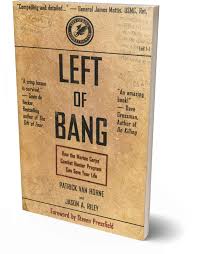We are honored and excited to be included as part of the FBI Citizens Academy Alumni Association’s upcoming Threat Preparedness Webinar Series. On February 25th, we will be presenting the one-hour webinar, “Getting Left of Bang”. The purpose of the session will be to share insights on improving situational awareness by applying the skills and concepts written about in the book, “Left of Bang” and taught through our training programs at The CP Journal.
The session is offered complimentary by the Boston Chapter of the FBI Citizens Academy Alumni Association. They have successfully conducted multiple in-person active shooter/threat workshops in the past are now offering many of their guest speakers through this Threat Preparedness Webinar Series. Here is some more information on the organization and the web-based series.
All security related professionals in business, education, retail, and healthcare, local, state and federal law enforcement and concerned citizens are welcome to attend this complimentary webinar presented by Patrick Van Horne, co-author of Left of Bang: How the Marine Corps Combat Hunter Program Can Save Your Life, US Marine and co-founder of The CP Journal.
Here are the details on the event and please don’t hesitate to share this link with others that you feel can benefit from the session. Thank you, as always, for your continued support for the work that we are doing.
Date: Thursday, February 25, 2016
Time: 1:00 pm to 2:00 pm EST
Cost: Free
Location: Online (web-based, pre-registration required)
Registration Link: https://attendee.gotowebinar.com/register/896605924886715138


